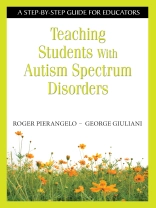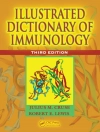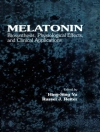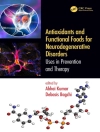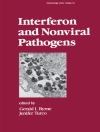‘Gives general educators the precise information needed to work with children on the autistic spectrum. The range of topics covered makes this book a great resource for professionals looking for an overview of autism spectrum disorders and how to work effectively with this population.’
—G. Richmond Mancil, Assistant Professor
University of Central Florida
‘Teachers in today′s classrooms are faced with the challenge of educating all children. This book provides an easy-to-understand reference for a traditionally misunderstood disability.’
—Vicki Mc Farland, Special Education Director
Learning Matters Educational Group
Create an appropriate learning environment to help children with ASD develop lifelong independence!
Written by experts in special education and psychology, this user-friendly resource summarizes current research and presents a comprehensive overview of how to teach students with autism spectrum disorders (ASD). The authors discuss intervention strategies for implementing effective educational programs that give youngsters with ASD the opportunity to learn and interact with their peers.
This practical book describes the characteristics of specific disorders, including autistic disorder, childhood disintegrative disorder, Rett syndrome, pervasive developmental disorder-not otherwise specified, and Asperger syndrome. Other topics include:
- Specific instructional approaches
- Behavioral, skill-based, and physiologically-based intervention models
- A comprehensive team approach that includes parents
- Assistive technology options
- Support services for transition from high school to adult life
Teaching Students With Autism Spectrum Disorders addresses the most significant, everyday challenges that general and special education teachers face in reaching students with ASD.
สารบัญ
Preface
Acknowledgments
About the Authors
1. Introduction to ASD
IDEA Definition of ASD
Overview of ASD
Causes of ASD
Prevalence and Incidence of ASD
Age of Onset of ASD
Gender Features of ASD
Cultural Features of ASD
Familial Pattern of ASD
Educational Implications of Students With ASD
Evidence-Based Practice in Working With Children With ASD and Their Families
Research Basis for Services to Children With ASD in the Home, School, and Community
2. Characteristics of Children With ASD
Possible Early Indicators of ASD
Patterns of Development
Impairments in Social Skills
Impairments in Communication Skills
Unusual and Repeated Behaviors and Routines
Additional Disabilities and Co-Morbid Conditions
Associated Features
3. Types of ASD
Autistic Disorder (Classic ASD)
Childhood Disintegrative Disorder
Rett Syndrome
Pervasive Developmental Disorder, Not Otherwise Specified (PDD-NOS)
Asperger Syndrome
4. Eligibility Criteria for Children With ASD
Review of the Characteristics of Children With ASD
Determination of the Procedures and Assessment Measures to Be Used
Determination of Eligibility for a Diagnosis of ASD
5. Overview of Effective Interventions
Behavioral Approaches
Relationship-Based Models
Skills-Based Interventions
Structured Teaching
Physiologically-Based Interventions
6. Creating Quality Educational Programs for Children With ASD
Family Involvement
Comprehensive Assessment of Skills and Deficits
Plan Development/Clearly Defined Goals and Objectives
Effective Teaching Strategies
Assessment of the Intervention
Structuring the Environment
Applying Functional Behavior Assessment to Problem Behavior
Transition
Opportunities With Peers
Comprehensive Team Approach
7. Collaborating With Parents
Obtaining a Diagnosis
Adjusting to the Diagnosis
Developmental Stages and Family Stresses
Creating a Collaborative Home-School Partnership
Building an Informed Partnership
Establishing a Team Approach
Planning for Communication
Facilitating Collaborative Relationships
When Collaboration Becomes Difficult
8. Effective Programming for Young Children With ASD: Ages 3-5
Curriculum Content
Highly Supportive Teaching Environments
Need for Predictability and Routine
Functional Approach to Challenging Behaviors
Transition Planning From Early Childhood Program to Elementary School
Family Involvement
9. Teaching Students With ASD: Instructional Approaches
Visual Approaches
Providing Precise, Positive Praise While the Student Is Learning
Using Meaningful Reinforcements
Planning Tasks at an Appropriate Level of Difficulty
Using Age-Appropriate Materials
Providing Opportunities for Choice
Breaking Down Oral Instructions Into Small Steps
Paying Attention to Processing and Pacing Issues
Using Concrete Examples and Hands-on Activities
Using Task Analysis
Using Discrete Trial Methods
Introducing Unfamiliar Tasks in a Familiar Environment When Possible
Organizing Teaching Materials and Situation to Highlight What Is Important
Encouraging Independent Effort and Incorporate Proactive Measures to Reduce the Likelihood of Becoming Dependent on Prompts
Directing and Broadenening Fixations Into Useful Activities
Knowing the Individual and Maintaining a List of Strengths and Interests
Developing Talent and Interest Areas
10. Teaching Students With ASD: Strategies for Classroom Management
Providing a Structured, Predictable Classroom Environment
Providing a Customized Visual Daily Schedule
Noting Aspects of the Tasks and Activities That Create Frustration
Providing Relaxation Opportunities and Areas
Providing Opportunities for Meaningful Contact With Peers Who Have Appropriate Social Behavior
Planning for Transitions and Preparing the Student for Change
11. Teaching Students With ASD: Strategies for Communication Development
Learning to Listen
Developing Oral Language Comprehension
Developing Oral Language Expression
Developing Conversation Skills
Echolalia
Using Alternative or Augmentative Communication Systems
12. Teaching Students With ASD: Strategies for Social Skills
Using Social Stories
Teaching Key Social Rules
Using Cognitive Picture Rehearsal
Using Peer Support
Using Social Skills Training Groups
Integrating Play Groups
Teaching Self-Monitoring/Managing Skills
Supporting the Development of Friendships
13. Teaching Students With Asperger Syndrome
Training
Characteristics and Learning Styles
Social Relation Difficulties
Social Communication Difficulties
Language Comprehension/Auditory Processing Difficulties
Sensory Processing Difficulties
Difficulty Representing Language Internally
Insistence on Sameness
Poor Concentration/Distractibility
Emotional Vulnerability
Restricted/Perseverative Range of Interest
Theory of Mind Deficit–Difficulty Taking the Perspective of Others
14. Assistive Technology for Children With ASD
What Is Assistive Technology?
Visual Representation Systems
Low-Tech Strategies
Mid-Tech Strategies
High-Tech Strategies
15. Behavior and Discipline Issues for Students With ASD
Developing Appropriate Behaviors for Students With ASD
Behavior Plan Key Idea: Use a PROACTIVE Approach
What to Do When a Student With ASD Engages in Inappropriate Behavior
Specific Behaviors of Concern
Other Possible Reasons for Problem Behaviors
16. Facilitating Inclusion
Teacher Preparation
Preparing Students With ASD
Promoting Understanding
Adapting Instruction
Adapting Equipment
Adapting the Physical Environment
Adapting Evaluation Methods
Adapting Assignments
Adapting Input Methods
Adapting Output Methods
Modifying Content and Difficulty Levels
Promoting Organization
One-to-One Instruction
Promoting Positive Peer Interactions
17. Transition Planning for Students With ASD
Strategies to Help With Transitions Between Activities and Settings
Transitions Between Grade Levels
Transitions Between Schools
Transition from High School to Adult Life
References
Index
เกี่ยวกับผู้แต่ง
George Giuliani is an assistant professor at Hofstra University′s School of Education and Allied Health and Human Services, in the Department of Counseling, Research, Special Education, and Rehabilitation. He is the executive director of the National Association of Special Education Professionals, president of the National Association of Parents with Children in Special Education (NAPCSE), vice-president of the National Association of Special Education Teachers, and an educational consultant for various school districts. He has provided numerous workshops for parents and teachers on a variety of special education and psychological topics.Giuliani earned Board Certification as a Diplomate Fellow in Child and Adolescent Psychology and Forensic Psychology from the International College of Professional Psychology. Giuliani is also a New York State licensed psychologist, certified school psychologist, and has an extensive private practice focusing on children with special needs. He is a member of the American Psychological Association, New York State Psychological Association, the National Association of School Psychologists, Suffolk County Psychological Association, Psi Chi, American Association of University Professors, and the Council for Exceptional Children. Giuliani earned his BA from the College of the Holy Cross, MS from St. John′s University, JD from City University Law School, and Psy D from Rutgers University, The Graduate School of Applied and Professional Psychology.Giuliani is the coauthor of numerous books, including The Big Book of Special Education Resources and The Step-by-Step Book Series for Special Educators.
